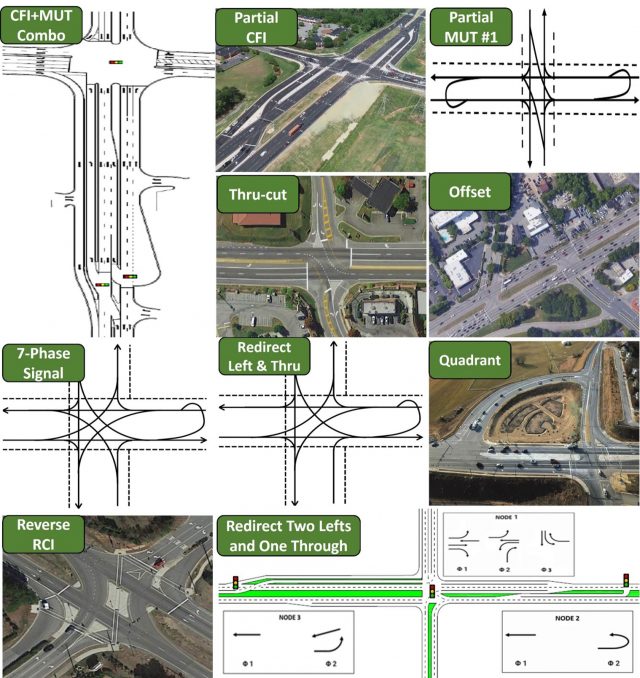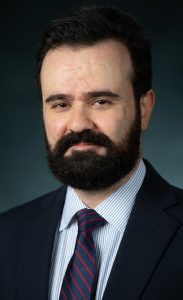
Engineers use a variety of intersection designs and signaling configurations to help traffic move safely and efficiently. UM civil engineer Amir Molan is working with researchers from North Carolina State University to study the use of three-phase traffic signals in hopes of improving safety and efficiency for different uses. Submitted graphic
OXFORD, Miss. – A University of Mississippi civil engineer is expanding his research on what could be the next generation of U.S. intersection design.
At the heart of Amir Mehrara Molan’s study is the three-phase traffic signal. A traffic phase is defined as the green, change and clearance intervals in a cycle assigned to specified movements of traffic. A cycle is the total time to complete one sequence of signals for all movements at an intersection.
Molan, assistant professor of civil engineering, is collaborating with researchers in North Carolina to determine the effectiveness of three-phase traffic signals at intersections.
“Almost half of all crashes in the U.S. occurs at or near intersections,” he said. “In addition, intersections play a key role in terms of traffic operations. Pedestrian and bicycle safety is also another important topic related to intersections.
“We believe that our study could help transportation professionals, including designers, engineers and policymakers, improve operations and safety for all users at intersections.”
The Ole Miss professor has received $99,000 through a grant to work with William Rasdorf and Ali Hajibabei, both of North Carolina State University, on a study of the benefits and drawbacks of using three-phase traffic signals. Comparing a three-phase setup to other intersection designs, the team hopes to determine the safest, most efficient and most cost-effective designs for different uses.
The team also will develop a technical guideline to help designers and policymakers in transportation understand when and where to use three-phase designs.
Molan first became involved in the research in 2020 while advising a graduate student at California State Polytechnic State University at San Luis Obispo on his master’s thesis on three-phase intersections. Based on the results, the team identified several high-potential traffic signal designs, one of which is the thru-cut design.
“Conventional intersections with high traffic demands have four traffic signal phases, and delay increases as the number of signal phases increases,” Molan said. “Therefore, we will study innovative intersections with three phases – removing one phase, compared to conventional designs – to improve traffic operation and safety.”
Molan became interested in further studies on this topic in June 2021, after Rasdorf invited him to collaborate on a proposal related to three-phase intersections.
“Dr. Molan was instrumental in providing assistance to the proposal writing phase of the work, which required an extensive literature review, clear ideas about what to propose and an understanding of the methodology required to do the work,” Rasdorf said. “He was also a key contributor to the development and delivery of our initial project presentation to the NCDOT.”
To view a video demonstrating how a cut-thru design works, click here. For an executive summary of the project, click here.
